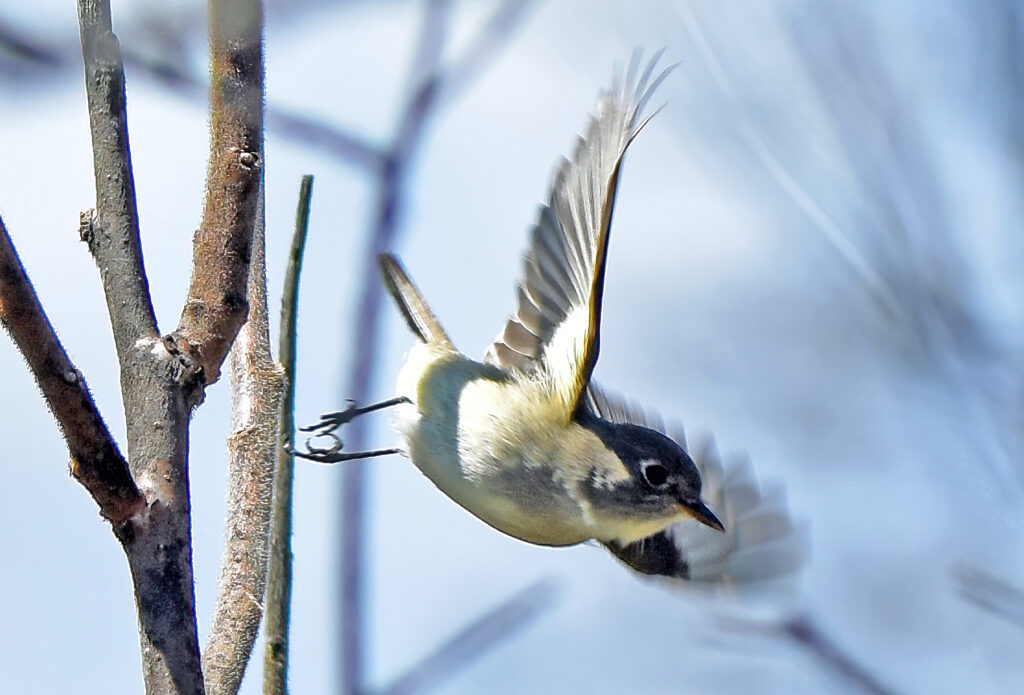
The Eastern Wood-Pewee (Contopus virens) is a small migratory bird that breeds in deciduous forests of eastern North America. It is a member of the tyrant flycatcher family, and it is about 6 inches long and weighs approximately 0.3 ounces. The Eastern Wood-Pewee has a grayish-brown upper body and a pale yellowish-white belly. It also has two white wing bars and a distinct eye-ring that helps distinguish it from other flycatchers.

During the breeding season, Eastern Wood-Pewees can be found in mature deciduous forests, where they perch on high branches and wait for insects to fly by. Their distinctive call, which sounds like “pee-a-wee,” is often heard in the forest during the summer months. As fall approaches, Eastern Wood-Pewees begin their migration to Central and South America, where they spend the winter.
In the winter, Eastern Wood-Pewees can be found in a variety of habitats, including open woodlands, second-growth forests, and even coffee plantations. They feed on insects, including flies, moths, and beetles, which they catch by sallying out from a perch to grab the insect in mid-air.
Eastern Wood-Pewees are not considered endangered, but like many migratory bird species, they face threats from habitat loss and fragmentation, as well as predation by domestic and feral cats. Conservation efforts are underway to protect and restore their breeding and wintering habitats.

In conclusion, the Eastern Wood-Pewee is a small migratory bird that breeds in deciduous forests of eastern North America. It is about 6 inches long and weighs approximately 0.3 ounces, and it has a grayish-brown upper body and a pale yellowish-white belly. Its distinctive call, which sounds like “pee-a-wee,” is often heard in the forest during the summer months. As fall approaches, Eastern Wood-Pewees begin their migration to Central and South America, where they spend the winter. Despite not being endangered, they face threats from habitat loss and fragmentation, as well as predation by domestic and feral cats.

